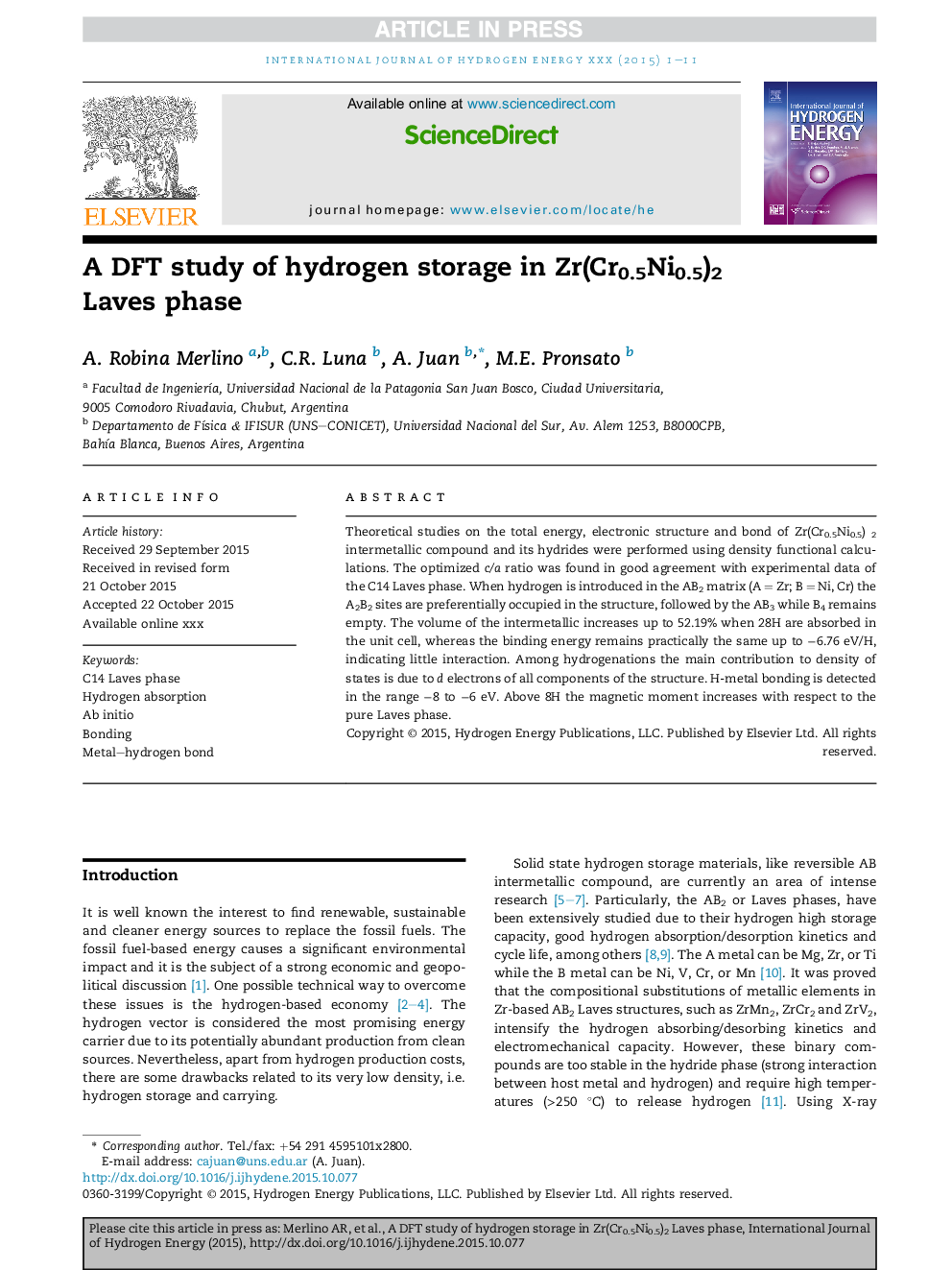| Article ID | Journal | Published Year | Pages | File Type |
|---|---|---|---|---|
| 7712116 | International Journal of Hydrogen Energy | 2016 | 11 Pages |
Abstract
Theoretical studies on the total energy, electronic structure and bond of Zr(Cr0.5Ni0.5) 2 intermetallic compound and its hydrides were performed using density functional calculations. The optimized c/a ratio was found in good agreement with experimental data of the C14 Laves phase. When hydrogen is introduced in the AB2 matrix (AÂ =Â Zr; BÂ =Â Ni, Cr) the A2B2 sites are preferentially occupied in the structure, followed by the AB3 while B4 remains empty. The volume of the intermetallic increases up to 52.19% when 28H are absorbed in the unit cell, whereas the binding energy remains practically the same up to â6.76Â eV/H, indicating little interaction. Among hydrogenations the main contribution to density of states is due to d electrons of all components of the structure. H-metal bonding is detected in the range â8 to â6Â eV. Above 8H the magnetic moment increases with respect to the pure Laves phase.
Related Topics
Physical Sciences and Engineering
Chemistry
Electrochemistry
Authors
A. Robina Merlino, C.R. Luna, A. Juan, M.E. Pronsato,
